
 |
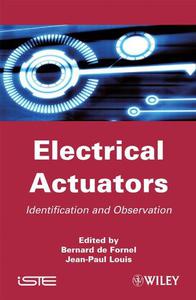 Electrical Actuators: Identification and Observation By 2010 | 476 Pages | ISBN: 1848210965 | PDF | 15 MB This helpful resource covers a large range of information regarding electrical actuators. In particular, robustness, a very problematic issue, is fully explored in a dedicated chapter. The text also deals with he estimate of non-measurable mechanical variables by examining the estimate of load moment, then observation of the positioning of a command without mechanical sensor. Finally, it examines the conditions needed to measure variables and real implementation of numerical algorithms. This is a key working resource for electrical engineers.Content: Chapter 1 Identification of Induction Motor in Sinusoidal Mode (pages 1-48): Edouard Laroche and Jean?Paul LouisChapter 2 Modeling and Parameter Determination of the Saturated Synchronous Machine (pages 49-117): Ernest Matagne and Emmanuel de JaegerChapter 3 Real?Time Estimation of the Induction Machine Parameters (pages 119-174): Luc LoronChapter 4 Linear Estimators and Observers for the Induction Machine (IM) (pages 175-250): Maria Pietrzak?David, Bernard de Fornel and Alain BouscayrolChapter 5 Decomposition of a Determinist Flux Observer for the Induction Machine: Cartesian and Reduced Order Structures (pages 251-283): Alain Bouscayrol, Maria Pietrzak?David and Bernard de FornelChapter 6 Observer Gain Determination Based on Parameter Sensitivity Analysis (pages 285-319): Benoit RobynsChapter 7 Observation of the Load Torque of an Electrical Machine (pages 321-404): Maurice Fadel and Bernard de FornelChapter 8 Observation of the Rotor Position to Control the Synchronous Machine without Mechanical Sensor (pages 405-459): Stephane Caux and Maurice Fadel  Electric Power Planning for Regulated and Deregulated Markets By Arthur Mazer(auth.) 2007 | 327 Pages | ISBN: 0470118822 | PDF | 6 MB As the industry environment transforms from a completely regulated setting to a broader, deregulated marketplace, new market participants must understand planning and operations of power systems to effectively participate in markets. This industry overview provides a description of utility operations and traditional planning, and then explains asset management, investment analysis, and risk management within the context of a market environment. Written to provide a broad, working knowledge of the industry, Electric Power Planning for Regulated and Deregulated Markets: Includes descriptions of generation and transmission network equipment Provides an overview of the regulatory framework, system design and systems operations for ensuring reliable delivery of power Presents system planning across different time horizons with the objective of minimizing power production costs Explains the principles and architecture of a market environment coupling operational imperatives with financial transactions Addresses approaches of various participants, including power producers, retailers, and integrated energy companies toward bidding in day ahead markets, managing risks in forward markets, portfolio development and investment analysis Provides numerous examples addressing cost minimization, price forecasting, contract valuation, portfolio risk measurement and others Examines past news events and explains what went wrong at Three Mile Island, the Northeast blackout of 2003, and the California energy crisis This is an ideal reference for professionals in the public and private power service sectors such as engineers, lawyers, systems specialists, economists, financial analysts, policy analysts, and applied mathematicians.Content: Chapter 1 Overview (pages 1-6): Chapter 2 Energy, Load, and Generation Technologies (pages 7-48): Chapter 3 The Grid (pages 49-80): Chapter 4 Short?Term Utility Planning (pages 81-121): Chapter 5 Long?Term Utility Planning (pages 122-151): Chapter 6 Midterm Utility Planning (pages 152-160): Chapter 7 A Market Environment (pages 161-179): Chapter 8 Asset Management in Short?Term Markets (pages 180-191): Chapter 9 Investment Analysis: Long?Term Planning in a Market Environment (pages 192-210): Chapter 10 Risk Management in the Midterm Markets (pages 211-277): Chapter 11 The California Experience (pages 278-290):
 Electric Field Applications: In Chromatography, Industrial and Chemical Processes By 1995 | 315 Pages | ISBN: 352728687X | PDF | 6 MB This authoritative review brings scientists up-to-date with the exciting recent developments in modern electric field applications and highlights their benefits compared with other methods. In Part 1 the book opens with a complete account of electrochromatography - a state-of-the-art technique that combines chromatography and electrophoresis. It reveals how you can achieve first-class separations in numerous analytical and biochemical applications. Part 2 focuses on the unique characteristics of electroprocesses in industry, and several examples, such as electroosmotic dewatering, new electro-rheological fluid technologies and demulsification processes in the car and oil industries, are given. The role of the electric field in chemical processes is discussed in Part 3. The chapters explore its use in concentration processes, immunoassay and molecular orientation methods, and important examples are presented in each case. This book is essential reading for analytical chemists, applied chemists and chemical engineers working in research and development wishing to keep up with this dynamic field. Content: Chapter 1 Introduction and Summary (pages 1-9): Takao TsudaChapter 2 Electrochromatography in Analytical Chemistry (pages 12-45): Takao Tsuda and Shinya KitagawaChapter 3 Electroosmosis and Electrochromatography (pages 47-74): Takao TsudaChapter 4 Electrochromatography with Radial Applied Voltage: Ion Separation by Electrochemical Approach (pages 75-89): Tsutomu NagaokaChapter 5 Electrochromatography in Biomolecular Analysis (pages 91-115): Daniel H. ShainChapter 6 Electromatography for Focusing, Counter?Current, Mass Spectrometry, and Two?Dimensional Separation (pages 117-129): Takao TsudaChapter 7 Electroosmotic Dewatering (pages 133-151): Masashi IwataChapter 8 Electrophoretic Forming of Ceramics (pages 153-169): Takao Tsuda and Emile H. IshidaChapter 9 Control of Viscosity by Electric Fields: Novel Materials for Electro?Rheological Fluids and their Applications (pages 171-184): Yuichi Ishino, Tasuku Saito, Norio Goshima and Kazuya TakanoChapter 10 Application of Electric Fields to Solvent Extraction (pages 185-203): Manabu YamaguchiChapter 11 Applications of the Electric Fields to the Resolution of Water?in?Oil Emulsions (pages 205-228): Manabu YamaguchiChapter 12 Dynamic Electroconcentration Processes in Analytical Chemistry (pages 231-263): Takao TsudaChapter 13 Pulse Immunoassay and Pulse Electrovoltage for Cell Manipulation and Analytical Coagulation Processes (pages 249-263): Eiichi TamiyaChapter 14 Molecular Orientation of Organic Compounds in Electric Fields: Organized Photochemistry (pages 265-299): Katsuhiko Takagi  Electric Drives By Marcel Jufer(auth.) 2010 | 228 Pages | ISBN: 1848212178 | PDF | 9 MB An electric drive that is designed or adapted to a specific application must take into account all the elements of the chain of constituent elements in its use and deployment. In addition to the motor, the transmission, power electronics, control, sensors, and electrical protection systems must be taken into account.The motor and the transmission can be optimized and designed to obtain the best energy efficiency assessment, in particular for dynamic nodes. An inventory and a characterization of these various components is proposed as part of this book's examination and explanation of the different technology elements, as well as a dynamic model of the system, with the whole system constituting a methodology for integrated electric drive design.Content: Chapter 1 Introduction - Electric Drive Components (pages 1-4): Marcel JuferChapter 2 Driven Bodies (pages 5-14): Marcel JuferChapter 3 Transmission (pages 15-40): Marcel JuferChapter 4 Motors (pages 41-86): Marcel JuferChapter 5 Motors (pages 87-100): Marcel JuferChapter 6 Global Design of an Electric Drive (pages 101-118): Marcel JuferChapter 7 Heating and Thermal Limits (pages 119-136): Marcel JuferChapter 8 Electrical Peripherals (pages 137-148): Marcel JuferChapter 9 Electronic Peripherals (pages 149-158): Marcel JuferChapter 10 Sensors (pages 159-186): Marcel JuferChapter 11 Direct Drives (pages 187-206): Marcel JuferChapter 12 Integrated Drives (pages 207-212): Marcel Jufer 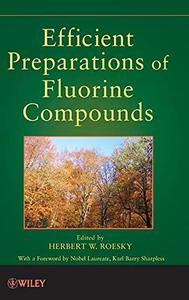 Efficient Preparations of Fluorine Compounds By 2012 | 479 Pages | ISBN: 111807856X | PDF | 24 MB The definitive guide to creating fluorine-based compounds?and the materials of tomorrowDiscovered as an element by the French chemist Henri Moissan in 1886, through electrolysis of potassium fluoride in anhydrous hydrogen fluoride?"le fluor," or fluorine, began its chemical history as a substance both elusive and dangerous. With a slight pale yellow hue, fluorine is at room temperature a poisonous diatomic gas. Resembling a spirit from a chemical netherworld, fluorine is highly reactive, difficult to handle, yet very versatile as a reagent?with the power to form compounds with almost any other element.Comprising 20% of pharmaceutical products and 30% of agrochemical compounds, as well as playing a key role in electric cars, electronic devices, and space technology, compounds containing fluorine have grown in importance across the globe. Learning how to safely handle fluorine in the preparation of innovative new materials?with valuable new properties?is of critical importance to chemists today. Bringing together the research and methods of leading scientists in the fluorine field, Efficient Preparations of Fluorine Compounds is the definitive manual to creating, and understanding the reaction mechanisms integral to a wide variety of fluorine compounds. With sixty-eight contributed chapters, the book's extensive coverage includes:Preparation of Elemental FluorineSynthesis Methods for Exotic Inorganic Fluorides with Varied ApplicationsIntroduction of Fluorine into Compounds via Electrophilic and Nucleophilic ReactionsDirect Fluorination of Organic Compounds with Elemental FluorineEfficient Preparations of Bioorganic Fluorine CompoundsAsymmetric Fluorocyclization ReactionsPreparations of Rare Earth Fluorosulfides and OxyfluorosulfidesThe book offers methods and results that can be reproduced by students involved in advanced studies, as well as practicing chemists, pharmaceutical scientists, biologists, and environmental researchers. The only chemical resource of its kind, Efficient Preparations of Fluorine Compounds?from its first experiment to its last?is a unique window into the centuries old science of fluorine and the limitless universe of fluorine-based compounds.Content: Chapter 1 Preparation of Elemental Fluorine (pages 1-6): Karl O. ChristeChapter 2 Preparation of Highly Active Cesium Fluoride (pages 7-8): Konrad SeppeltChapter 3 Preparation of Highly Active Silver Fluoride (pages 9-10): Konrad SeppeltChapter 4 A Room?Temperature Non?Irradiative Synthesis of XeF2 (pages 11-15): Ulf Breddemann, John R. Debackere and Gary J. SchrobilgenChapter 5 Efficient Perfluorination of K2B12H12 in Neutral Acetonitrile (pages 16-18): Dmitry V. Peryshkov, Eric V. Bukovsky and Steven H. StraussChapter 6 Efficient Preparation of the Highly Soluble ortho? and para?C60(CF2C6F5)2 Derivatives (pages 19-21): Igor V. Kuvychko, Bryon W. Larson, Steven H. Strauss and Olga V. BoltalinaChapter 7 Synthesis of Cs[1?H?CB11F11] (pages 22-25): Michal Valasek, Filip sembera, Michael J. Hughes, Ivan Stibor, Zbynek Janousek and Josef MichlChapter 8 Synthesis of Zero?Valent Trifluoromethyl Chalcogenato Derivatives, [NMe4]ECF3 (E = S, Se, Te), and Related Compounds (pages 26-34): Wieland Tyrra and Silke KremerChapter 9 Synthesis Methods for Exotic Inorganic Fluorides with Varied Applications (pages 35-59): Dayal T. Meshri, N. C. Mathur and Ritesh R. JainChapter 10 Tris(pentafluorophenyl)borane, B(C6F5)3, a Powerful, Well?Soluble, Nonoxidizing Lewis Acid and the Weakly Coordinating Tetrakis(pentafluorophenyl)borate Anion, (C6F5)4? (pages 60-64): Hermann?Josef FrohnChapter 11 Pentafluorophenyldifluoroborane, C6F5BF2, and Pentafluorophenyltrifluorosilane, C6F5SiF3, Versatile Reagents for Fluorine/Pentafluorophenyl Substitution Reactions in Strongly Oxidizing Hypervalent Nonmetal Fluorides (pages 65-71): Hermann?Josef FrohnChapter 12 Iodine(III and V) Fluorides: Interesting Fluorinating Agents (pages 72-75): Hermann?Josef FrohnChapter 13 Tetramethylammonium Fluoride, [N(CH3)4]F, a Widely Applicable Reagent to Introduce Fluoride Ions and a Suitable Nucleophile to Initiate the Transfer of Perfluoroorganyl Groups to Electrophiles (pages 76-78): Hermann?Josef FrohnChapter 14 Preparation of Transition Metal Sulfide Fluorides (pages 79-81): Michael GerkenChapter 15 Transition Metal Carbonyl Sulfur Dioxide and Thiazylfluoride Complexes: Reactions at the Metal Center and at the Ligand (pages 82-87): Rudiger MewsChapter 16 Cesium, Mercury, and Silver Salts with Sulfur-Nitrogen-Fluorine Anions: Useful Transfer Reagents for NSF Building Blocks (pages 88-93): Rudiger MewsChapter 17 Laboratory?Scale Synthesis of Gold Trifluoride and Uranium Hexafluoride (pages 94-99): Thomas M. KlapotkeChapter 18 Preparation of Transition Metal Fluorides using ClF3 (pages 100-107): Ralf HaigesChapter 19 Preparation of Fluorine?Containing Molecular Halides and Heteropolar Salts with Elements of Group 15 and Niobium and Tantalum Halides (pages 108-116): Lothar KolditzChapter 20 Fluoro and Fluorohydroxy Complexes of As, Sb, and Sn (pages 117-120): Lothar KolditzChapter 21 Trifluoromethyl Compounds via Electrophilic and Nucleophilic Reactions (pages 121-126): Jean'ne M. ShreeveChapter 22 Introduction of Fluorine into Compounds via Electrophilic and Nucleophilic Reactions (pages 127-132): Jean'ne M. ShreeveChapter 23 The "Real" Iodine and Bromine Monofluorides (pages 133-138): Shlomo RozenChapter 24 The Versatile Chemistry of Acetyl Hypofluorite: The First Hypofluorite Not Bonded to a Polyhaloalkyl Group (pages 139-145): Shlomo RozenChapter 25 Direct Fluorination of Organic Compounds with Elemental Fluorine (pages 146-153): Shlomo RozenChapter 26 The Surprising Chemistry of Bromine Trifluoride (pages 154-172): Shlomo RozenChapter 27 Preparation of Silicon? and Sulfur?Based Fluorinated Methane Derivatives as Versatile Fluoromethylation Reagents (pages 173-204): G. K. Surya Prakash and Fang WangChapter 28 Pentafluoroethyl Lithium: Reactions with Carbonyl Compounds and Epoxides (pages 205-209): Olesya Kazakova and Gerd?Volker RoschenthalerChapter 29 Synthesis of ??Hydroxy??,??difluoromethylenephosphonates (pages 210-213): Olesya Kazakova and Gerd?Volker RoschenthalerChapter 30 Synthesis of Pentafluoro??6?sulfanyl?Substituted Acetylenes for Liquid Crystals (pages 214-219): Olesya Kazakova, Maxim Ponomarenko and Gerd?Volker RoschenthalerChapter 31 Delocalized Lipophilic Cations as a Source of Naked Fluoride and Phase?Transfer Catalysts (pages 220-226): Nataliya Kalinovich, Olesya Kazakova and Gerd?Volker RoschenthalerChapter 32 Methyltrifluoropyruvate Imines Possessing N?oxalyl and N?Phosphonoformyl Groups: Precursors to a Variety of ??CF3???Amino Acid Derivatives (pages 227-231): Olesya Kazakova and Gerd?Volker RoschenthalerChapter 33 Rhodium?Mediated Synthesis of (3,3,3?Trifluoropropyl)trimethoxysilane and (3,3,3?Trifluoropropyl)triphenylsilane (pages 232-234): Falk Wehmeier and Thomas BraunChapter 34 Rhodium?Mediated Synthesis of a Tetrafluoropyridyl?2?boronate Ester (pages 235-236): Michael Teltewskoi and Thomas BraunChapter 35 Palladium?Mediated Synthesis of 4?Vinyltetrafluoropyridine and 2,3,5,6?Tetrafluoropyridine (pages 237-239): David Breyer and Thomas BraunChapter 36 Preparation of Polyfluoroaryl?1,2?difluorovinylsilanes (pages 240-242): Donald J. Burton and Ba V. NguyenChapter 37 Preparation of (Z)?2?iodo?1,2?Difluorostyrenes (pages 243-245): Donald J. Burton and Ling XueChapter 38 Preparation of 1,4?Bis(Z?2?iodo?1,2?difluoroethenyl)benzene (pages 246-247): Donald J. Burton and Craig A. WesolowskiChapter 39 Stereospecific Carboamidation Route to (Z)?N?Phenyl?2,3?difluoro?3?(triethylsilyl) acrylamide (pages 248-249): Donald J. Burton and Craig A. WesolowskiChapter 40 Preparation of 2?Trifluoromethyl?3,3,3?trifluoropropanal (pages 250-251): Donald J. Burton and Donald A. WiebeChapter 41 Synthesis of Tetrafluorocatechol (pages 252-255): Sudharsanam Ramanathan, Dayong Sang, Vivek Kumar and David M. LemalChapter 42 Preparation of an Unsymmetrical Bis((perfluoroalkyl)sulfonyl)imide (pages 256-261): Darryl D. DesMarteau and Thomas D. HickmanChapter 43 Preparation of Perfluoroalkyl Sulfilimines and Sulfoximines (pages 262-265): Emmanuel MagnierChapter 44 Preparation of Trifluoromethylsulfonium Salts (pages 266-269): Emmanuel MagnierChapter 45 Preparation of Organometallic Fluorides of Main Group and Transition Elements (pages 270-274): Herbert W. RoeskyChapter 46 Preparation of Pentafluorosulfanyl Carbonyl Compounds (pages 275-278): John T. WelchChapter 47 Preparation of Power?Variable Electrophilic Trifluoromethylating Agents, S?(Trifluoromethyl)dibenzothiophenium Salts Series (pages 279-289): Teruo UmemotoChapter 48 Synthesis of Fluorine?Containing Heterocycles from ?,??Dihydropolyfluoroalkylsulfides and Fluorinated Thiocarboxylic Acids Derivatives (pages 290-307): Vadim M. Timoshemko and Yuriy G. ShermolovichChapter 49 Synthesis of Octafluorocyclooctatetraene (pages 308-314): John M. Buzby, Aldos C. Barefoot, Michael W. Grayston, Evan D. Laganis, Roy F. Waldron and David M. LemalChapter 50 Preparation of Fluoroolefins (pages 315-333): Moritz F. Kuehnel and Dieter LentzChapter 51 Preparation of Ionic Liquids of Fluorocomplex and Oxofluorocomplex Anions by Fluoroacid-Base Reactions (pages 334-337): Kazuhiko Matsumoto and Rika HagiwaraChapter 52 Synthesis of Difluorocyclopropyl Building Blocks: 2,2?Difluorocyclopropylmethanol and 2?(Bromomethyl)?1,1?difluorocyclopropane (pages 338-342): Wei Xu and William R. DolbierChapter 53 Preparation of 1,1,2,2,9,9,10,10?Octafluoro[2.2]paracyclophane and Perfluoro[2.2]paracyclophane (pages 343-348): William R. Dolbier, Jian?Xi Duan, Alex J. Roche and Lianhao ZhangChapter 54 Synthesis and Application of gem?Difluoromethylenated and Trifluoromethylated Building Blocks (pages 349-364): Feng?Ling Qing and Xiao?Long QiuChapter 55 1,3?Dipolar Cycloaddition Reactions to Fluoroalkenes (pages 365-369): Hanna Wojtowicz?Rajchel and Henryk KoroniakChapter 56 Synthesis of Fluorinated Vinyl Derivatives of Nucleic Acid Bases (pages 370-374): Hanna Wojtowicz?Rajchel, Donata Pluskota?Karwatka and Henryk KoroniakChapter 57 Synthesis of CF3?Substituted Aziridine Ring by the Gabriel Reaction (pages 375-378): Tomasz Cytlak, Bartosz Marciniak and Henryk KoroniakChapter 58 Preparation of ??Fluoro Amino and ??Fluoro Enamino Reagents (pages 379-384): Justyna Walkowiak and Henryk KoroniakChapter 59 Synthesis of Original Fluoromonomers and Their Radical Copolymerization with Vinylidene Fluoride (pages 385-395): Bruno AmeduriChapter 60 Convergent 18F Radiosynthesis (pages 396-399): V. Gouverneur and O. LozanoChapter 61 Asymmetric Fluorocyclization Reactions (pages 400-404): V. Gouverneur and O. LozanoChapter 62 Preparation of Allylic Fluorides (pages 405-411): V. Gouverneur and O. LozanoChapter 63 Dehydroxyfluorinations of Primary or Secondary Alcohols Using Perfluoro n?Butylsulfonyl Fluoride (Nonaflyl Fluoride) in Combination with 1,8?Diaza?bicyclo[5.4.0]undec?7?ene (pages 412-414): Orlin Petrov, Matthias Schneider, Rolf Bohlmann, Stephan Vettel and Helmut VorbruggenChapter 64 Preparation of Rare Earth Fluorosulfides and Oxyfluorosulfides (pages 415-424): A. Demourgues and A. TressaudChapter 65 Preparation of Carbon-Fluorine Compounds and Fluoride or Oxide Fluoride?Intercalated Graphites (pages 425-432): Tsuyoshi NakajimaChapter 66 Safe Synthesis of Superstoichiometric Mesoporous Fluorocarbons (pages 433-441): Valentin N. MitkinChapter 67 Preparation of Fluorinated ??Alumina (pages 442-446): Erhard Kemnitz, Tomaz Skapin and John M. WinfieldChapter 68 High?Yield Synthesis of a Single Asymmetric Isomer of C70(CF3)10 by High?Temperature Radical Trifluoromethylation (pages 447-449): Natalia B. Shustova, Steven H. Strauss and Olga V. Boltalina  Effective Treatment of Women's Pelvic and Sexual Pain Disorders: Healing the Body and Mind During the #MeToo Era English | 2023 | ISBN: 0367767155 | 234 Pages | PDF (True) | 7.44 MB 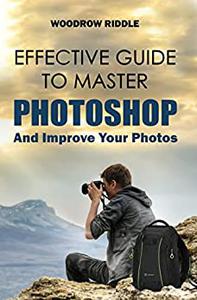 Effective Guide To Master Photoshop and improve your photos by Woodrow Riddle English | 2022 | ISBN: N/A | ASIN: B0B888G76D | 150 pages | EPUB | 14 Mb Right here's what you'll find out: 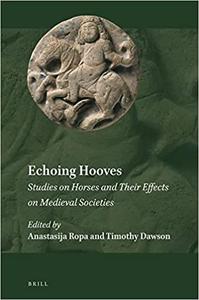 Anastasija Ropa, "Echoing Hooves: Studies on Horses and Their Effects on Medieval Societies " English | ISBN: 9004466487 | 2022 | 360 pages | PDF | 9 MB The horse was the essential animal for the medieval world: means of transport, a vehicle of social status and a cherished companion. This volume explores the ways in which horses shaped medieval societies. 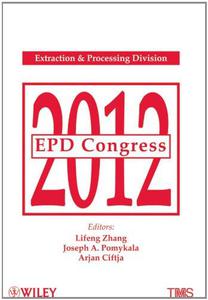 EPD Congress 2012 By 2012 | 533 Pages | ISBN: 1118291409 | PDF | 30 MB Proceedings symposia sponsored by the Extraction & Processing Division (EPD) of The Minerals, Metals & Materials Society (TMS)Held during the TMS 2012 Annual Meeting & Exhibition Orlando, Florida, USA, March 11-15,2012Content: 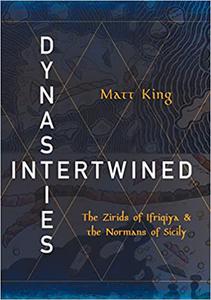 Matt King, "Dynasties Intertwined: The Zirids of Ifriqiya and the Normans of Sicily " English | ISBN: 1501763466 | 2022 | 252 pages | PDF | 17 MB Dynasties Intertwined traces the turbulent relationship between the Zirids of Ifriqiya and the Normans of Sicily during the eleventh and twelfth centuries. In doing so, it reveals the complex web of economic, political, cultural, and military connections that linked the two dynasties to each other and to other polities across the medieval Mediterranean. Furthermore, despite the contemporary interfaith holy wars happening around the Zirids and Normans, their relationship was never governed by an overarching ideology like jihad or crusade. Instead, both dynasties pursued policies that they thought would expand their power and wealth, either through collaboration or conflict. The relationship between the Zirids and Normans ultimately came to a violent end in the 1140s, when a devastating drought crippled Ifriqiya. The Normans seized this opportunity to conquer lands across the Ifriqiyan coast, bringing an end to the Zirid dynasty and forming the Norman kingdom of Africa, which persisted until the Almohad conquest of Mahdia in 1160. |